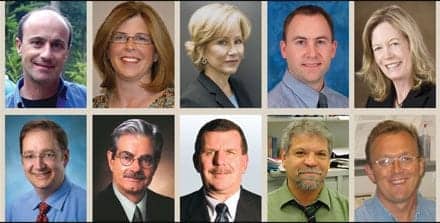In our November/December issue, we spotlight sound level meters. Our roundup reflects the views of participants and is not intended to be a scientific survey.
We asked manufacturers/distributors:
- What are your best-selling products?
- Why are those items selling versus your other offerings?
- Tell us about changes you envision down the road.
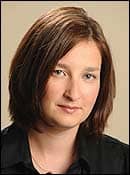
|
| Renee Bessette |
RENEE BESSETTE
marketing manager
Sperian Hearing Protection LLC, with Howard Leight, San Diego
QuietDose is the first in-ear dosimeter. It monitors in real time all of the sound that reaches the user’s eardrum when they’re wearing protection and when they’re not wearing protection. QuietDose has a tiny microphone that’s threaded through an earplug, or into an ear cup of an earmuff, and it measures the noise that somebody’s exposed to during the course of their day—it’s collecting the dose over the course of the day. This is our first noise-measurement product. The product is used primarily with workers who have a standard threshold shift, or are approaching a standard threshold shift in their hearing, or are achieving hearing loss. Ideally, it can help people in real time if they’re achieving their dose—there’s a flashing light if they’re approaching their dose, and a red light notifying them if they have achieved their dose. When that happens, they need to take additional precautions to prevent additional noise exposures. This is the only device to determine whether workers are using their earplugs or earmuffs correctly. You can use this as an opportunity to maybe prevent or eliminate the use of dual protection, you can appropriately schedule workers, and you can streamline how many hours that they’re in noise. They may be able to use their workforce more effectively. There will be expansions upon functionality of the product.
BILL BUNKER
owner
ProTek Instruments, Stayton, Ore
Our best-selling products are Quest Technologies EDGE series noise dosimeters. They offer convenient and efficient cable-free design, and downloads to software for analysis and management of measurement data. Changes down the road include instrumentation capable of downloading to software for management and reports.
RICH PEPPIN
president
Scantek Inc, Columbia, Md
Our best-selling product is a handheld sound level meter meeting the latest ANSI and IEC standards for accuracy. We have other, more expensive products, but they don’t compete price-wise with the handheld meters. Not much change envisioned down the road. Smaller, less expensive, as the electronics get smaller and less costly. Meters have reduced in size since the 1960s, perhaps by a factor of two or three. Functions include storage, averaging, and so on, but until measuring standards change—OSHA, local jurisdictions, etc—most new and old meters will be perfectly capable of meeting customer requirements. I see it similar to the computer industry—are computers smaller and lighter and less expensive now? Yes. Are they much different than 2 to 3 years ago? Not much.
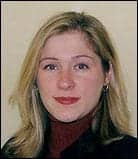
|
| Rob Brauch |
ROB BRAUCH
industrial hygiene
product manager
Larson Davis Inc, Provo, Utah, a division of PCB Piezotronics Inc, Depew, NY
We have a line of very contemporary sound level meters. Two of them are by far the most popular. One is called the SoundTrack LxT, which was originally developed for use by industrial hygienists and safety professionals for measuring workplace exposures. We also manufacture the Model 831, which is used for noise-control engineering analysis. These are powerful, handheld sound level meters that are very ergonomically designed. They’re able to be held and operated with just one hand, so you can take them into various types of physical environments—like a paper mill—and accurately measure the sound level at the source. We also make another model called the 824, which is primarily used for audiometer calibration. We supply that as part of a complete system, including all of the acoustical couplers necessary for testing all of the different types of headphones and insert earphones that come with various audiometers—so we can test the output of the audiometer as a system, electroacoustically. Thus, we can provide field calibration for audiometers with NIST-traceability. That device also can be used for sound booth qualification testing. The products that we’ve developed in the past couple of years are digital-sampling products that provide complete analysis of the entire sound environment at the push of a button, whereas previously these measurements used to be performed in a sequential fashion. So, it’s possible to gather a lot more information about the various characteristics of the sound field, in terms of amplitude, frequency—what is called octave or one-third octave analysis—much more conveniently. And we even have the ability to actually record the sound itself using the sound level meter simultaneously—while it’s measuring, it can also literally record what is called a .wav file of the actual sound source itself for later analysis or reproduction. These tools are used in all areas of audiology, from research audiology into clinical settings. The reality of this type of market is such that we manufacture specialty instrumentation for a very—if you look at the broad world of electronic instrumentation—niche market. It’s very specialized equipment for very dedicated applications. You’ll see continued adoption of these emerging technologies in the consumer market, and that has an added benefit. It forces us to adopt human interface protocols that are already accepted. We try to design instruments that, even though they’re very specialized and are doing extremely complex measurements under the covers, behave just as any other electronic appliance that you might interact with would act.
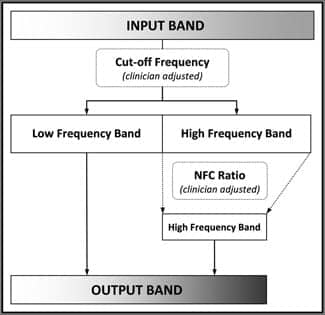
|
| Albert M. Warner |
ALBERT M. WARNER
owner
SPA Associates, Dublin, Ohio
We sell and service a variety of audiological equipment. The sound level meters have been gaining in popularity with the hearing aid dispenser. Our best-selling sound level meter is an inexpensive, digital meter that measures in the 35–130 dBSPL range. This meter has the dBA and dBC scale and has the fast and slow meter response for ease of measurement. This sound level meter is used for two main functions—monitoring of background noise in the test environment, thus assuring a known and documented ambient condition. This is especially valuable for the traveling dispenser who performs on-site testing. And measuring output levels of sound-field speakers and balancing surround-sound speakers, finding center/patient seat position. This is a valuable sound monitor when test room conditions change or when performing on-site testing. As the benefits of this simple sound measurement are universally realized, some enhanced sound-measuring devices specific to audiological testing may emerge. For instance, ongoing ambient sound measurement paired with the ongoing hearing test. A warning/alert light appears when exceeding a preset test environment ambient level. Remove the noise source, wait until the noise passes before proceeding, or find a new test site. These are basic general-purpose measurements with a general-purpose sound level meter.
We’ve asked users of sound level meters:
- What brand/type of sound level meter are you using?
- Have you tried other kinds?
- What do you like about your preferred product versus other kinds?
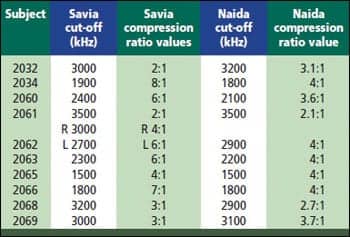
|
| Bruce Waring |
BRUCE WARING
chair, standards committee
National Association of Special Equipment Distributors (NASED)
First, I will cover the personal questions regarding sound level meters I have used.
I have had the opportunity to use probably the most common meters used in our industry. Quest 1900 type 1 sound level meter with an OB300 octave band filter and AA175 analyzer: This is a solid meter and was reliable and worked well. The AA175 analyzer had some drawbacks as it could read frequencies only to 12,000 Hz. Over the years, high-frequency audiometry has become more prevalent in the clinical market. For most applications, however, it worked well. I used a B&K 4930 artificial mastoid for bone conduction measurements; microphones and couplers from Quest and Brüel & Kjær. Quest pricing in the market is very competitive.
Larson Davis 824 type 1 sound level meter: This is a great workhorse, and is probably one of the most common meters used by service technicians in the hearing industry. The built-in analyzer and the ability to measure up to 20,000 Hz make it a great fit. I used an 824 for many applications including audiology instrument calibration, noise evaluation in the workplace, and reverberation time measurements for school classroom compliance. The ability to add modules makes it very versatile. Larson Davis also has the AMC 493 bone conduction system. It’s small and very portable but has stirred a little controversy in the industry as to whether it is suitable for use in calibrating bone vibrators in the industry, because of its size and susceptibility to temperature and humidity. Personally, I had very few problems with it. Microphones and couplers were from Larson Davis.
As of 2 years ago, I changed to the AUSSCO ACS 100 PC-based audiometric calibration system. This system has been great. It is an automated system that allows the user to “link” into the latest audiometers, automatically read, and adjust the calibration. It is programmable for all makes and models of audiometric equipment. It has manual control or automatic. It has been extremely reliable for me and is currently being used by all the major audiometer manufacturers. I use microphones and couplers from GRAS and a Brüel & Kjær 4930 bone conduction mastoid.
In regard to NASED, I am the current chair of technical standards on the board of directors. I have just recently formed a technical standards committee to steer the association members in the correct procedures and methods for calibration of audiology instrumentation. We have developed and are currently updating a technical reference handbook for all NASED-certified technicians. The association is endeavoring to bring the technical level and competence of our member technicians to a higher standard. NASED-trained technicians will all calibrate and maintain audiology instrumentation to specific ANSI standards and manufacturers’ recommendations as prescribed in the NASED technical reference handbook. All technicians are required to maintain their NASED technician CEUs. NASED members are required to use calibration instrumentation that meets the ANSI S1.4-1983(R2001) standard for type 1 sound level meters. They are also required to use the specified couplers and microphones for calibration to the ANSI S3.6 1996 rev 2004 standard for audiometers. As an association, we do not recommend a specific make or model of sound level meter and associated equipment; however, it must meet the ANSI S1.4-1983(R2001) standard for type 1 sound level meters.
Judy O’Rourke is associate editor of Hearing Review Products. She can be reached at [email protected]





